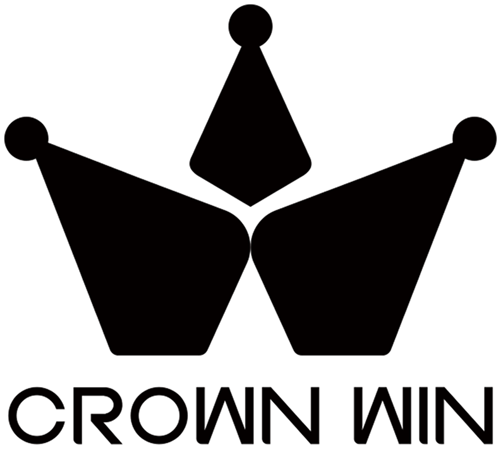
Introduction
Packaging is not only a simple covering for your product; it is your brand, the initial handshake with the consumers, a silent salesperson on the retail shelves, and an important element in the cost of doing business. The selection of alternative packaging types may have a great influence on the initial impressions, the safety of the products, shipping costs, and brand receptiveness. The boxed and clamshell packaging are two of the most popular types of packaging that have taken over most of the market today and have different purposes with their own merits and demerits.

Boxed packaging is are enclosed structure usually made out of either cardboard or paperboard or rigid material which fully covers goods, and clamshell packaging are hinges which contain two half shells that come out like a shell exposing the goods inside. What matters is to know the fundamental differences between the two approaches so that you can make wise decisions on your package, which can also meet your product requirements, brand preference, and cost.
By the end of this paper, you will be well informed about the two kinds of packaging, their advantages and disadvantages, and some practical tips on the most suitable packaging when it comes to packaging that will fit your requirements.
What is Boxed Packaging
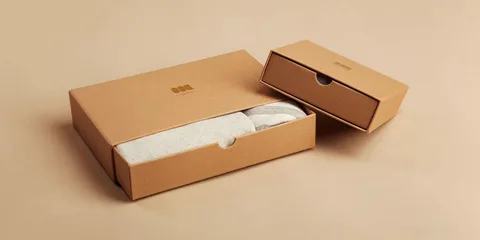
Boxed packaging includes a very broad scope of tapped container formats that are intended to entirely cover and safeguard products. The standard design is four walls, a lower part, and a lid or top forming a complete enclosure to protect the contents against external factors. These packages are made out of different types of materials like corrugated cardboard to use in shipping, paperboard to be displayed on shelves in stores, rigid chipboard to be used in presenting high quality packages, and most of the latest designs are made with recycled fibers or environmentally friendly materials.
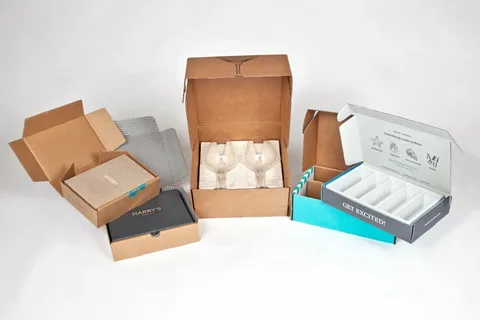
Boxed packaging is highly versatile and can be customized in many different ways to meet a wide variety of requirements. Commodity-level products can be packed in ordinary folding cartons at a reasonable price, and luxury products can be packed in rigid boxes. Magnetic closure packages are convenient and give a high-quality feel, drawer-style packages are designed to provide a unique unboxing experience, and tube or cylinder packages are designed to cover the product completely at any time during transportation and display. This kind of package is most suitable with sensitive goods, like glassware or electronics, premium goods, including jewelry or cosmetics, foodstuffs that need a barrier package, or any products where the experience of unpackaging is of greater value to the brand image and consumer satisfaction.
What is Clamshell Packaging
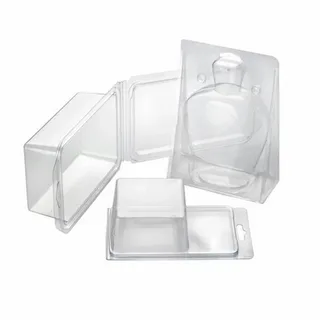
The design of clamshell packaging is characterized by two identical pieces that fit together through an inbuilt hinge, enabling the clamshell package to be opened and closed. This hinged type of structure normally places the hinge on one side of the structure, allowing the upper part of the structure to fold open, exposing the product attached to the bottom part. Mounting holes are frequently provided to allow retail display hooks to be attached to it, and it may also have tamper-evident sealing along the edges.
Traditional clamshell packaging is mostly made out of a variety of plastic materials, with the most widely used ones being PET (polyethylene terephthalate) and PVC (polyvinyl chloride) because of their clarity, formability, and economy. HDPE and polypropylene are used to create products that are more durable or chemically resistant. Nevertheless, new sustainable solutions are on the rise, such as bio-based plastics based on renewable materials, recycled material sources, and new fiber-based clamshells that do not hide but have a better eco-impact.
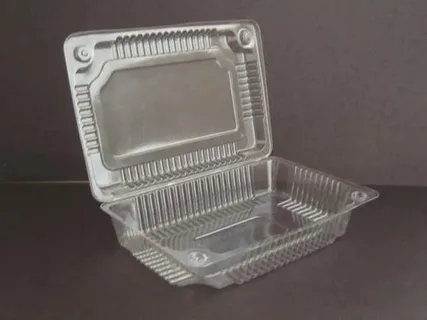
Clamshell packaging is also popular in retailing where products visibility determines the buying patterns. Cables, chargers, mini-gadgets, etc. are electronics accessories that carry the benefit of display and theft deterrence. Personal care, hardware tool, toys, and pharmaceutical products commonly use the clamshell because of its visibility, protection and tamper-evidence characteristics.
Key Differences: Boxed vs Clamshell

Visibility
The product must be concealed in a boxed form and graphics and photography or transparency windows are therefore employed to communicate the product attributes to the consumers. It is a model that relies more on the branding factors and descriptive writing in the delivery of value propositions. Conversely, clamshell packaging will give a complete or almost complete picture of the product and can allow a customer to see the actual product, discuss the quality and ensure content before buying. This openness can be very influential to the buying especially in regards to goods that require physical examination.
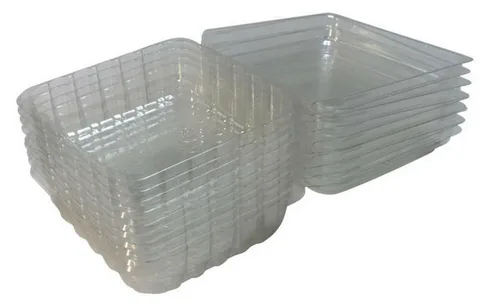
Protection & Durability
The two categories of packaging offer protection differently. Full enclosure and cushioning provide boxed packaging with a wide range of protection against dust, moisture, light, and other physical damage. Shortly designed boxes that are well designed can support weight on the top of the stack and impact. Clamshell packaging offers better protection against tampering and contamination and could be used to guarantee that products have been placed in place; but it may provide insufficient protection against impact and less protection against environmental factors like humidity or UV light.
Branding & Unboxing Experience
Boxed packaging is great at creating an unboxing experience to remember and a very high scale of branding. The entire exterior will be modeled as a canvas, where graphics, messages, and brand storytelling can be done, and the interior items can be customized for dramatic product reveals. Clamshell packaging contains less branding real estate (usually limited to labels, cards, or printed backing material), but compensates for its shortfall with the instant publicity the product gets, which can strengthen quality perceptions.
Cost Considerations
In the formats, the costs of production are very different. Boxed packaging usually needs fewer investments in tools and economies of scale with high volumes, but the cost of materials may also run high with luxurious finishes or complicated designs. Clamshell packaging requires more initial investment in custom tooling in the form of the mould but low costs of other shapes and quantities produced in large amounts. Clamshell packaging usually yields better shipping costs as it utilizes the space better and has lower weights whereas boxed packaging has to use extra protective material increasing the dimensional weight.
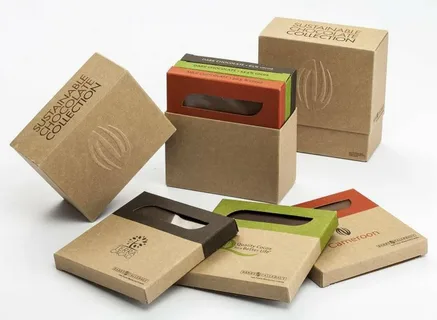
Environmental Impact
Packaging is more and more guided by environmental factors. Boxed packaging with paper-based materials is more easily recycled and biodegraded, particularly in the case of a minimum number of inks and glues. Nevertheless, the carbon footprint is going to differ depending on the material sourcing and transportation aspects. Modern clamshell packaging has a sustainability problem in terms of plastic waste concerns and a lack of recycling facilities in some plastic variants, but recent developments of bio-based and recycled content solutions are resolving such problems.
User Convenience
Environmental factors are increasingly directing the packaging. Paper-based boxed packaging can be recycled and biodegraded more easily, especially when a minimum number of inks and glues are used. However, the carbon footprint will vary according to the material sourcing and transportation factors. One sustainability issue of modern clamshell packaging is that certain plastic variants cannot be recycled, and there is a concern over plastic waste, although the recent innovations of bio-based and recycled content options are overcoming these challenges.
Storage & Logistics
Logistics and storage are factors that have an effect on efficiency. Boxed packaging can easily and efficiently be stacked in warehouses and when shipping, thus the use of space is maximized. The uniformity of the rectangular forms blends effectively with the conventional shipping containers and palletizing systems. The irregular shapes or sticking out pieces of clamshell packages can cause problems with storage because of the clamshell shape, and the hard shell can withstand the weight of products during their handling and minimize the rate of damage in the distribution channels.
Pros and Cons of Boxed Packaging
Advantages
Boxed packaging provides a better branding experience with large printable areas that support complicated graphics, product details, and powerful advertisements. The format offers superior safeguard of delicate or sensitive goods by means of personalized inside designs, cushion material, and shield attributes. Freedom in design makes it possible to have new structural designs, high-quality finishing, and unforgettable unpacking experiences, which solidify brand value. Further, the boxes made of paper tend to have a more favorable environmental profile due to the possibility of recycling and the use of renewable materials.
Disadvantages
Poor product visibility will mean the customers will need to use external graphics and descriptions as opposed to checking the products themselves, and this may also affect purchase confidence. Dimensional weight considerations make shipping possible to be expensive, particularly when it comes to lightweight products in large boxes. Intricate patterns or high-quality finishes can add a lot of costs in production, and some products need to be provided with extra protective inserts or cushioning material, which can be expensive and troublesome to the process of packing.
Pros and Cons of Clamshell Packaging
Advantages
Having good product visibility enables the customer to view the products they want to buy and gain confidence, thus lowering returns. The hard plastic casing also offers high protection of the products when being handled and displayed, yet it maintains order of the components, and losses are minimized. The clamshell packages will be an effective method of deterrence in theft due to their tamper-evident design that is sealed and their compatibility with the retail security measures. It is also in the format that allows an efficient displaying of the retail by uniform shapes and hanging functions.
Disadvantages
There are still environmental issues regarding plastic waste and recycling restrictions, especially when it comes to mixed plastic or package contamination. Another phenomenon, commonly referred to as “wrap rage,” occurs when a package proves difficult to open without causing harm or escalating frustration. Custom mold tooling may also be expensive, and small production volumes may not be economical. Furthermore, there is limited space available for the brand when compared to boxed packaging, which limits the chances of marketing the product through marketing messages.
Industry-Specific Examples / Use-Cases
Electronics & Accessories
In small electronic and accessory products, clamshell packaging is frequently employed; therefore, in retail environments where theft deterrence and product visibility are the two most critical considerations. Products such as phone chargers, cords, earbuds, and memory cards are more ideal to be displayed in a manner that the customers can confirm that they are compatible and of good quality. It is not only designed strictly to maintain fine parts, but also in an organized manner. However, costly electronic products can include boxed enclosures to create a better unboxing experience, and also store in-depth documentation, accessories, and other protective assets.
Food & Produce Packaging
Clamshell is a commonly used packaging for fresh items such as berries, cherry tomatoes, and salad greens, and is suited to allow visibility of the item to be used in the assessment of quality, as well as prevent contamination and damage during handling. The packaging enables consumers to check the fruits or vegetables to determine their ripeness and condition. On the other hand, packaged and processed foods are normally packaged in containers that have a strong barrier, a long shelf life, and wide branding capabilities that provide nutritional details, preparation guidelines, and brand marketing.
Luxury & Gift Items vs Mass Retail
The use of boxed packaging as a way of establishing exclusive unboxing experiences, which strengthen the premium positioning, is mostly used in luxury goods. Jewellery, perfumes, watches, and gifts do not require the versatility and flexibility of presentation that rigid boxes offer. Mass retail products tend to use clamshell packaging because it is cost-effective, deters theft, and effectively allows the display of multiple products using small retail space.
Pharmaceuticals & Medical Devices
Medical products have special packaging needs that are in balance between visibility, sterility, and regulatory needs. Tamper-evidence and easy identification of the product. Clamshell packaging is common in over-the-counter drugs and in medical devices. Specialized boxed packaging, which is child-resistant, requirements of detailed labeling, and protection against moisture and light breakages, is normally used in prescription medications.
Toys, Hardware & Small Tools
Clamshells are widely used in toy packaging to package action figures, mini-playsets, and other collectibles, where the display of products is the primary factor in purchases, and security of the product is highly important to avoid theft. The form will enable children and parents to know what they are buying precisely and preserve the integrity of the product. Clamshell packaging is advantageous to hardware and other small tools, due to its immediate capability of keeping multiple parts visible, in place, and protected, but larger or heavier tools might need greater protection, which is provided by the use of boxed packaging.
How to Choose the Right Packaging for Your Product
The choice of the best packaging must be made with consideration of various factors that influence functionality and business performance. Start by evaluating the physical properties of your product: size and weight, fragility, and shape are all factors that impact packaging. Fragile products usually enjoy the protection afforded by the boxed packaging, whereas the durable products might enjoy exposure provided by the clamshell design.
Take into account product visibility as a factor in your buying. Clamshell packaging is of clear benefit when the consumer needs to view the goods before purchase, like in the case of fresh food, electronic accessories, or collectibles. Nevertheless, when your brand narrative, high-end positioning, or the complexity of your product requires a lot of communication, boxed packaging provides a better way to communicate and has more space to convey your message and graphics.
The financial limitations have a major influence on packaging choices. Consider initial expenses and expenses of continuous operation, such as production, material, shipping, and storage. Clamshell could represent a long-run economic advantage where the standardized products have high volumes, whereas boxed could represent a superior economy where product lines are variable, or premium positioning.
Green targets are also shaping the packaging preferences. When environmental concern is important in your brand or target market, explore recycled content in both formats, biodegradable materials, and end-of-life recyclability. Evaluate the packaging options in relation to your general corporate sustainability program as well as customer expectations.
Packaging decisions are influenced by display requirements in retail. Hanging displays prefer a clamshell format with mounting holes, whereas shelf displays can take advantage of the stacking of boxed packaging and the visibility of the brands. Take into account how your packaging will look in different retailing backgrounds and e-commerce platforms.
Trade-offs When making trade-offs, it is important to understand that packaging decisions require trade-offs between competing priorities. Better security of the products could be at the expense of a decrease in visibility, and the cost reduction could interfere with branding possibilities or environmental quality. Effective packaging solutions maximize the tips that are crucial in your particular case, instead of focusing on being the best in all aspects.
Customer testing and prototyping contribute to good knowledge 90rior to making final packaging choices. Make mock-ups/samples of both types of packaging and solicit the opinion of the target customers, retailers, and internal stakeholders. Test packaged under actual conditions, such as shipping, handling, and display, to determine the possible problems before the actual production.
Keep abreast of new technological trends and packaging. The packaging market is constantly being redefined with sustainable materials, intelligent packaging designs, and evolving consumer tastes and preferences. Consider how present decisions can respond to the future requirements and opportunities.
Conclusion
A decision to use boxed or clamshell packaging is a matter of your product needs, brand goals, and business needs, and does not have an actual best practice. Boxed packages have an advantage in providing high-end brand experiences, fragile product protection, and flexibility in design, whereas clamshell packaging has a greater product visibility, theft prevention, and high retail display performance. Effective packaging choices should be made with a keen consideration of some of the factors, such as product attributes, market target, cost, sustainability, and retail needs. Take your time to carefully evaluate your existing packaging performance, experiment with other formats, and seek advice from the experienced packaging professionals who will guide you to optimize your packaging strategy in order to create maximum impact and efficiency.
